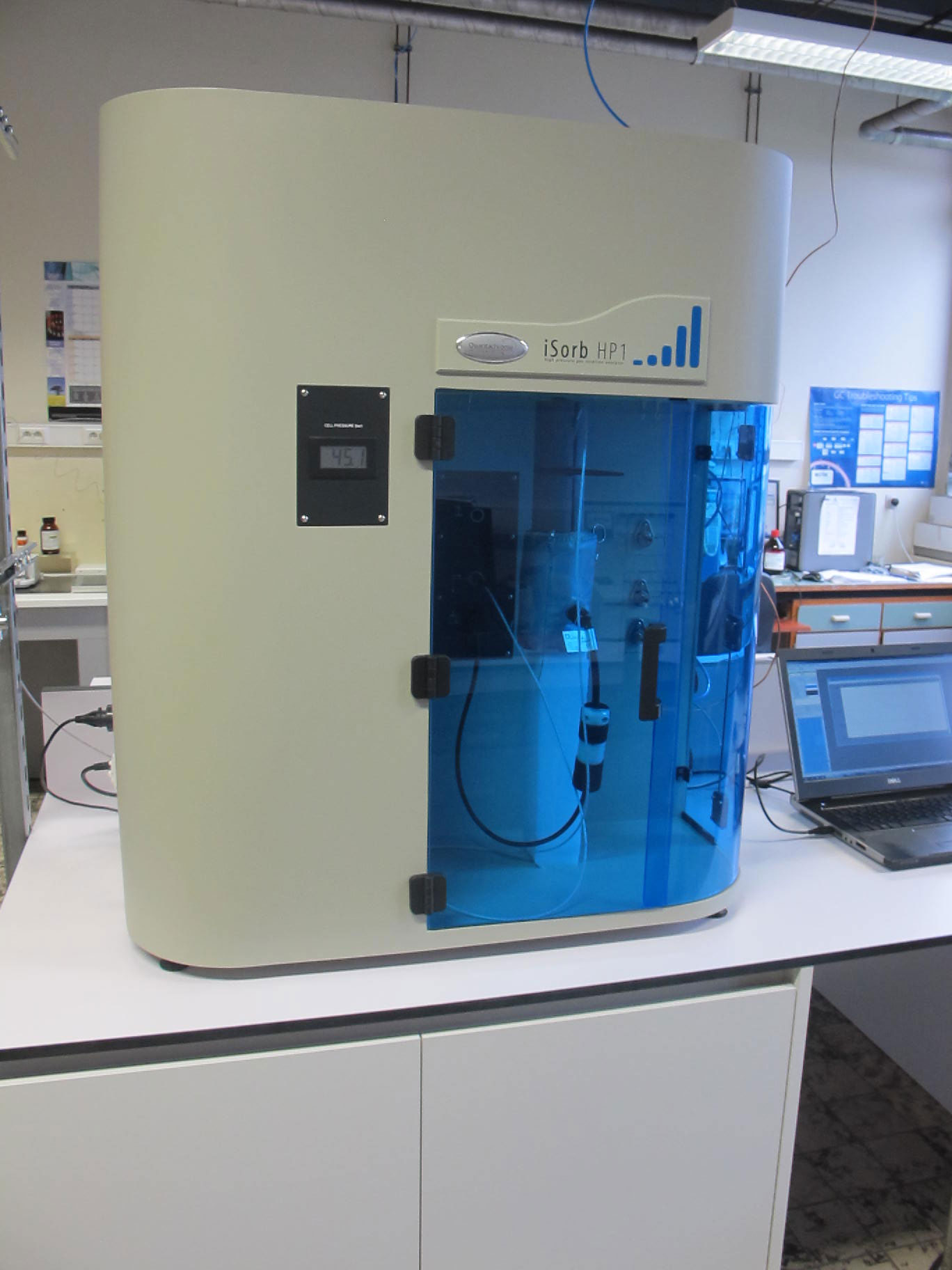The Hydrogen and Catalysis laboratory has acquired new equipment (iSorb HP2) and there were multiple student projects planned in the lab this summer.
iSorb HP2
A new Quantachrome iSorb HP2 high pressure gas sorption analyser has been procured by the Hydrogen and Catalysis Lab, capable of measuring at pressures between 0.5 mbar and 200 bar. This instrument operates in a similar fashion to the Autosorb, but is not limited to work at 1 bar, and is also available for in-situ use during beamline measurements. It is suitable for volumetric measurements of samples, generating isotherms; volume uptake at constant temperature with variable pressure.

Quantachrome iSorb HP2. (Image from Ghent University).
The instrument is suitable for probing gas sorption of materials, including sorption of carbon dioxide, methane and hydrogen, which makes it a suitable instrument for probing the properties of energy storage materials. For hydrogen storage materials, it can measure physisoption and hydride formation.
The instrument is currently waiting for installation and subsequent user training.
General Updates
As a reminder to staff and users, when the Hydrogen and Catalysis lab has been used for experiments, it should be acknowledged in any papers, presentations etc. that make use of those data. This can be as simple as "The authors wish to thank the ISIS Hydrogen and Catalysis Lab for the use of their facilities".
Glovebox
A new glovebox is being installed in the Hydrogen and Catalysis lab, intended to be used with battery materials. This will be located in the area formerly occupied by the robot at the back of the lab. It will use an argon atmosphere.
Summer Placement Student
A summer placement student, supervised by Stuart Parker, worked in the lab over this summer. Kate Morton worked with the IGA equipment mentioned in the previous Newsletter; the project involved the characterisation of graphine, graphine oxide, activated carbon and other carbon-based compounds. Kate has now gone to complete her degree and is doing a research project in the catalysis area.
To discuss the use of these equipment, please contact Dr James Taylor, and check out the Hydrogen and Catalysis Laboratory
website.
